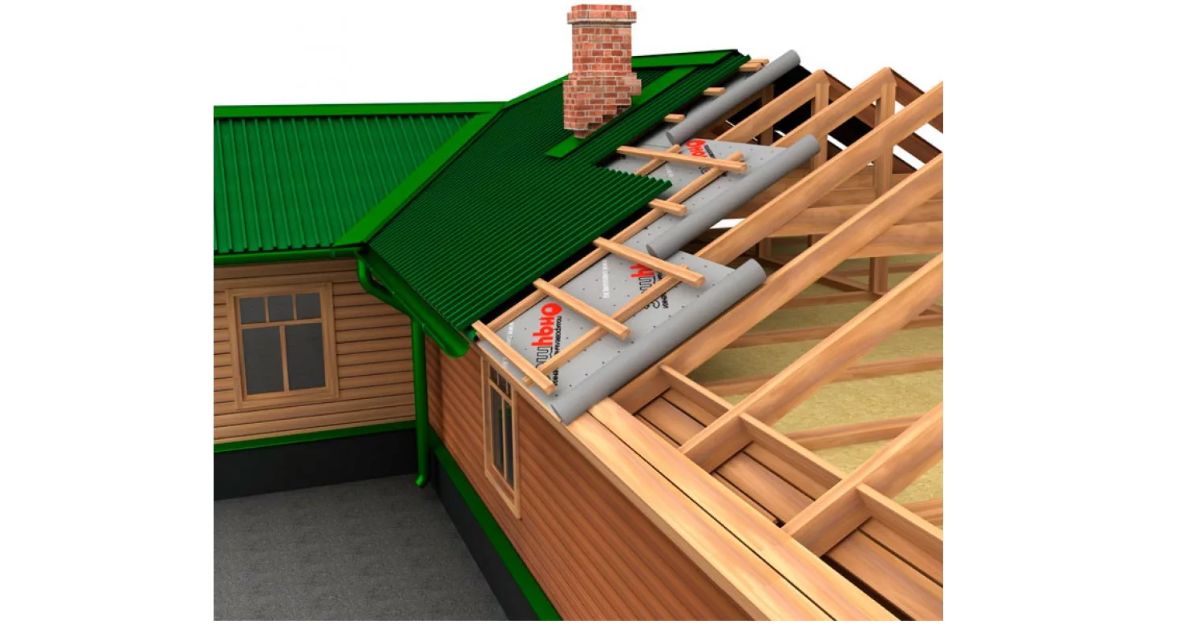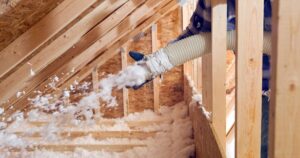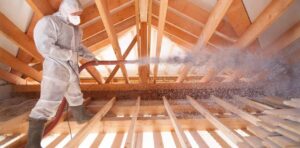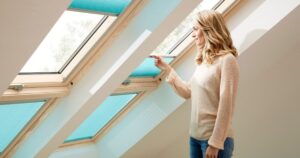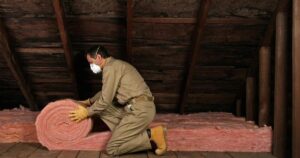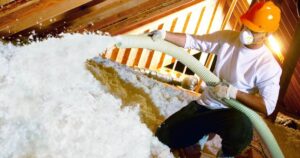Pitched roofs are a common architectural feature in many residential and commercial buildings. They are known for their ability to efficiently shed rainwater and snow, providing effective drainage and protection for the structure underneath.
In this article, all questions that are in your mind regarding Insulating a pitched roof from the inside are cleared. Insulating a pitch from the inside can be a cost-effective way to improve energy efficiency and maintain a comfortable living space. This approach is suitable for homes where access to the attic or roof space is limited, making external insulation impractical. How to insulate a pitched roof from the inside that our today’s question.
The pitch or slope of the roof can vary, and different designs offer different aesthetic and functional benefits. Pitched roofs are in contrast to flat roofs, which have minimal slope or incline.
Assessing Your Roof and NeedsRoof Inspection
Before you start insulating, it’s crucial to assess the condition of your roof. Look for any signs of damage, leaks, or existing attic insulation. Address any issues like leaks or rot before adding insulation to ensure long-term effectiveness.
Determining Insulation Needs
Consider your climate, budget, and the desired level of insulation (measured by R-value). Different insulation materials offer varying R-values. Evaluate the available space between the rafters to choose the most appropriate insulation type and thickness.
Preparing for Insulation
When preparing for insulation in a building, there are several essential steps to ensure a successful installation. Here’s a brief overview:
Air Sealing
Prior to insulating, ensure that the roof structure is airtight. Seal any gaps, cracks, or holes using caulk or foam sealant. Proper air sealing helps prevent heat loss and drafts.
Vapor Barrier Consideration
In some climates, you may need a vapor barrier to control moisture. Install it on the warm side of the insulation to prevent condensation within the roof structure.
Insulating the Roof
When preparing for insulation in a building, there are several essential steps to ensure a successful installation. Here’s a brief overview:
Installation of Insulation Material
Choose your insulation material, whether it’s fiberglass batts, blown-in cellulose, or foam board. Install it carefully
Fiberglass Batts Cut the batts to fit snugly between the roof rafters, using insulation hangers or wire mesh for support.
Blown-in Insulation Utilize a blower machine to evenly fill the space between the rafters with loose-fill insulation.
Foam Board Cut the boards to size, ensuring a tight fit between the rafters. Seal any gaps with foam or caulk.
Proper Ventilation
Maintain adequate ventilation within your attic or roof space to prevent moisture buildup. Install soffit vents and ridge vents to allow air circulation.
Finishing Touches
For home improvement projects, finishing touches might include adding crown molding, baseboards, or trim to complete the look of a room. It could also involve installing fixtures like lighting, faucets, and cabinet handles.
Optional Ceiling Finish
If you desire a finished look, consider installing drywall or other finishing materials over the insulation. Ensure that there is proper ventilation between the insulation and the finished ceiling to prevent moisture issues.
Safety Precautions
Always prioritize safety when handling insulation materials. Wear protective gear, including gloves, a mask, and goggles, to minimize exposure to the insulation materials and any potential irritants.
Check Local Regulations
Ensure you adhere to local building codes and regulations while insulating your roof. This may involve obtaining permits or scheduling inspections to guarantee your project complies with safety standards and environmental requirements.
By following this comprehensive guide with organized H2 and H3 headings, you can effectively insulate your pitched roof from the inside, improving your home’s energy efficiency and overall comfort.
Maintenance and Monitoring
Maintenance refers to the regular upkeep and repair of equipment, machinery, or systems to ensure they function efficiently and safely.
Regular Inspection
After insulating your pitched roof from the inside, it’s essential to periodically inspect your roof to ensure that there are no signs of moisture issues or damage. Regular checks can help detect problems early and prevent costly repairs.
Maintain Proper Ventilation
Continuously monitor the ventilation in your attic or roof space. Clear any obstructions in soffit vents or ridge vents to maintain proper air circulation. Adequate ventilation is essential for preventing moisture buildup and prolonging the life of your roof.
Energy Efficiency and Cost Savings
Energy efficiency and cost savings are closely intertwined concepts that have a significant impact on both the environment and your finances. Here’s an explanation of how they relate:
Calculate Energy Savings
With proper insulation in place, you can calculate your potential energy savings. Reduced heating and cooling costs can provide a significant return on your investment in insulation.
Reduce Carbon Footprint
Improving your home’s energy efficiency through insulation also contributes to a reduction in your carbon footprint. It’s an environmentally responsible choice that benefits both your wallet and the planet.
Professional Assistance
When to Consult Experts
If you’re unsure about any aspect of insulating your pitched roof from the inside, or if your project involves complex structural changes, it’s wise to consult with insulation professionals or contractors. They can provide expert advice and ensure the job is done correctly and safely.
More Considerations for Insulation
Sound Insulation
If noise is a concern, consider using insulation materials with sound-dampening properties. This can help create a quieter and more peaceful indoor environment, especially if your home is situated in a noisy area.
Pest Prevention
In some regions, pests and insects can find their way into insulation. Ensure your insulation is properly sealed and maintained to deter unwanted guests. Regular inspections can help detect and address any pest-related issues.
DIY vs. Professional Installation
DIY Insulation
If you have experience with construction and feel confident in your abilities, you may choose to insulate your pitched roof as a DIY project. However, be sure to follow all safety guidelines, and consider professional help if your project is extensive or complex.
Professional Insulation
Professional insulation contractors have the expertise, tools, and experience to handle more complex projects. They can also provide warranties on their work, ensuring peace of mind and high-quality results.
Cost and Budgeting
Upfront Costs
The cost of insulating a pitched roof from the inside can vary significantly based on the materials used and the size of your roof. Make sure to budget for insulation materials, tools, safety gear, and any professional assistance if needed.
Long-Term Savings
While there may be initial expenses, remember that proper insulation can lead to long-term savings on your energy bills. These savings can help offset the initial investment and provide a return on your insulation project over time.
FAQ’s
How do you insulate a sloped roof?
The common approach is to use roof framing members that are deep enough to carry the structural loads, fit the needed level of insulation in between, and still provide space for ventilation.
Where should roof insulation be?
Ideally, insulation would be added to the loft floor and to the underside of the roof.
Final Thoughts
Insulating a pitched roof from the inside is a practical way to enhance the comfort and energy efficiency of your home. By carefully assessing your roof’s condition, selecting the appropriate insulation material, and following proper installation techniques, you can enjoy the benefits of a well-insulated living space.
Regular maintenance, compliance with building codes, and consideration of energy efficiency will help you make the most of your investment. Whether you take on the project as a DIY endeavor or seek professional assistance, a well-insulated roof can make a substantial difference in your home’s overall quality and utility.

